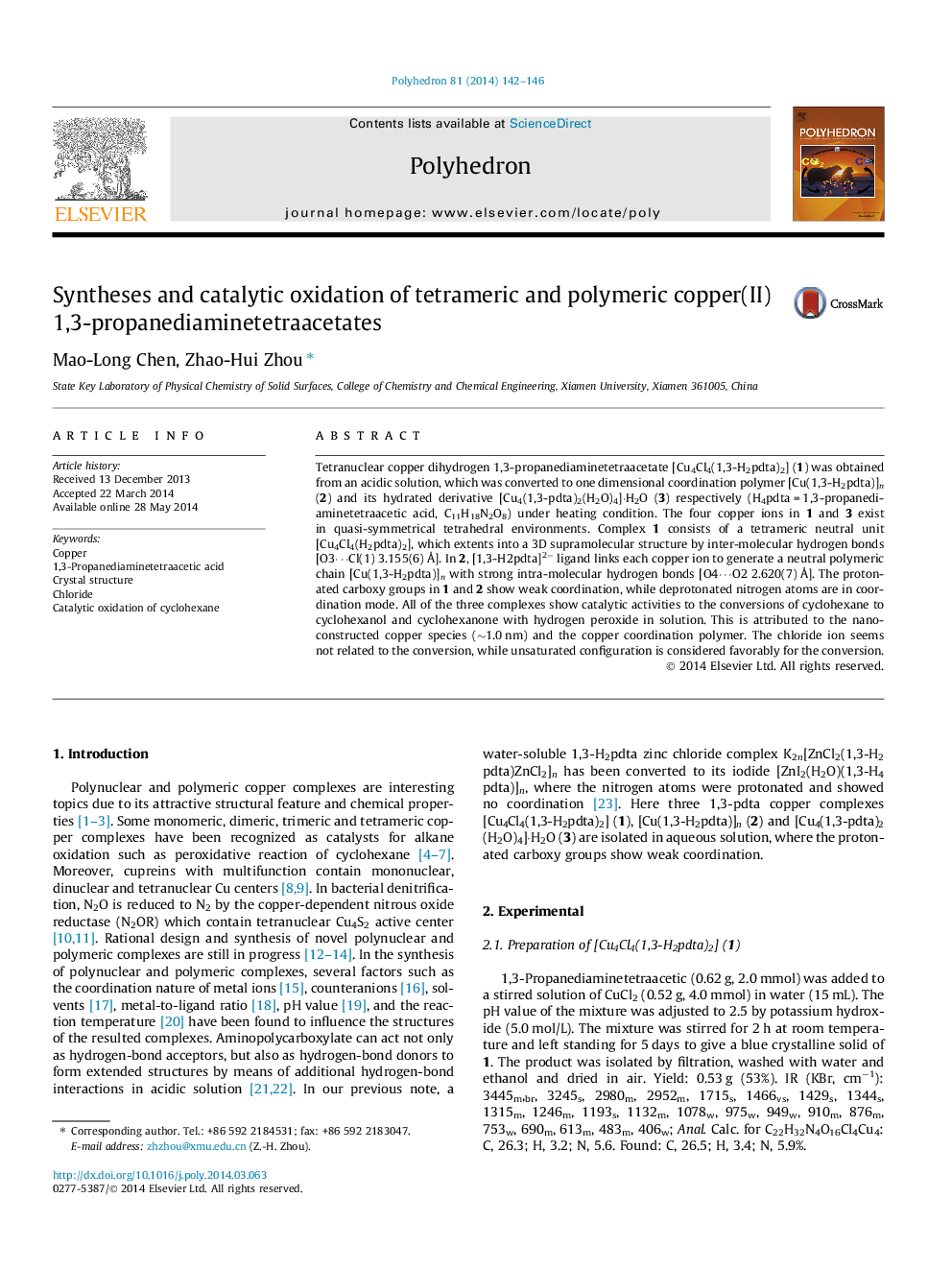| Article ID | Journal | Published Year | Pages | File Type |
|---|---|---|---|---|
| 1334414 | Polyhedron | 2014 | 5 Pages |
Tetranuclear copper dihydrogen 1,3-propanediaminetetraacetate [Cu4Cl4(1,3-H2pdta)2] (1) was obtained from an acidic solution, which was converted to one dimensional coordination polymer [Cu(1,3-H2pdta)]n (2) and its hydrated derivative [Cu4(1,3-pdta)2(H2O)4]·H2O (3) respectively (H4pdta = 1,3-propanediaminetetraacetic acid, C11H18N2O8) under heating condition. The four copper ions in 1 and 3 exist in quasi-symmetrical tetrahedral environments. Complex 1 consists of a tetrameric neutral unit [Cu4Cl4(H2pdta)2], which extents into a 3D supramolecular structure by inter-molecular hydrogen bonds [O3⋯Cl(1) 3.155(6) Å]. In 2, [1,3-H2pdta]2− ligand links each copper ion to generate a neutral polymeric chain [Cu(1,3-H2pdta)]n with strong intra-molecular hydrogen bonds [O4⋯O2 2.620(7) Å]. The protonated carboxy groups in 1 and 2 show weak coordination, while deprotonated nitrogen atoms are in coordination mode. All of the three complexes show catalytic activities to the conversions of cyclohexane to cyclohexanol and cyclohexanone with hydrogen peroxide in solution. This is attributed to the nano-constructed copper species (∼1.0 nm) and the copper coordination polymer. The chloride ion seems not related to the conversion, while unsaturated configuration is considered favorably for the conversion.
Graphical abstractTetrameric copper 1,3-propanediaminetetraacetate was converted to its polymeric and hydrated products under heating. The copper complexes could be used as catalysts for the oxidation of cyclohexane to cyclohexanol and cyclohexanone with yields of 39.4–52.7%. Unsaturated configuration is considered favorably for the conversion.Figure optionsDownload full-size imageDownload as PowerPoint slide
